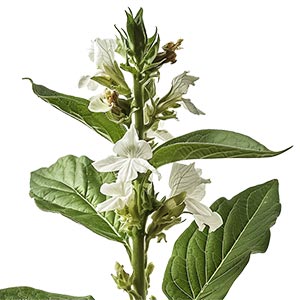Tobacco Flower, known for its distinct aroma, is a key ingredient in many fragrances. Unlike the cured leaves, the flower adds a lighter, more floral note. The use of Tobacco Flower in perfumery dates back to the 16th century, following the introduction of tobacco to Europe. Its fragrance is more subtle and sweet compared to the robust, earthy scent of tobacco leaves. Tobacco Flower contributes a unique character to fragrances, often adding a warm, slightly sweet, and rich floral accent. It is especially prominent in creating a balance within oriental and woody compositions, where it complements heavier notes with its lighter, floral quality. In modern perfumery, Tobacco Flower is appreciated for its versatility. It pairs well with a variety of scents from spicy and woody notes to lighter citrus and floral elements, making it a favorite among perfumers seeking to add depth and complexity to their creations.
Natural or Synthetic?
The natural extraction of Tobacco Flower scent is challenging due to the delicate and ephemeral nature of the flowers. This makes extraction processes like enfleurage or solvent extraction less common and more expensive. Synthetic versions are used to emulate the sweet, floral aroma of Tobacco Flower more consistently and cost-effectively. Synthetics provide a practical way to capture the essence of Tobacco Flower without the complexities of natural extraction.
Fragrance Families Tobacco Blossom Most Commonly Found In
Show fragrances that contain Tobacco Blossom as a note



